
Find Help
More Items From Ergsy search
-

What measures are taken to ensure food safety in school meals?
Relevance: 100%
-
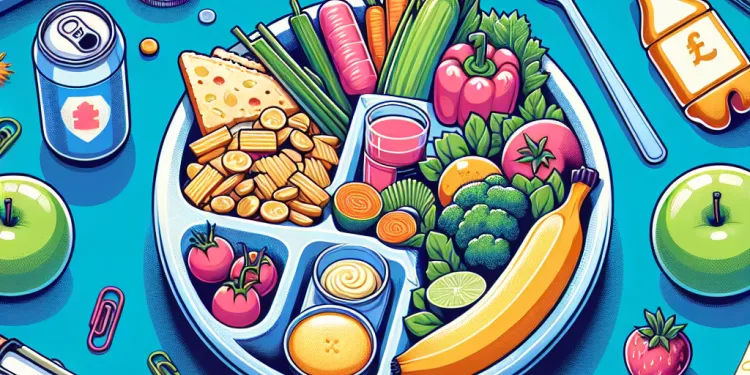
How are school meals provided in the UK?
Relevance: 75%
-

Are school meals inspected for quality and standards?
Relevance: 75%
-
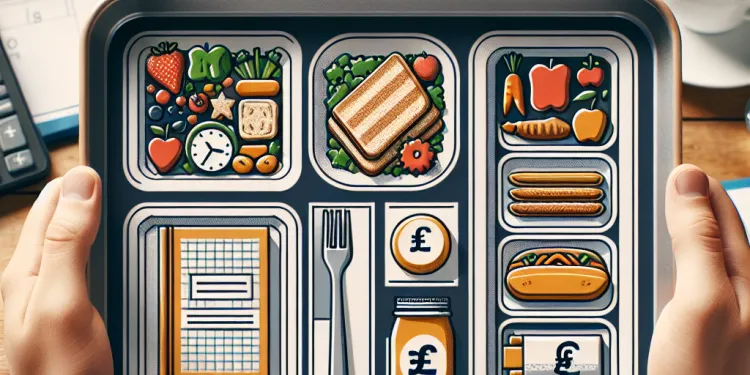
Are there educational components to the school meal program?
Relevance: 68%
-
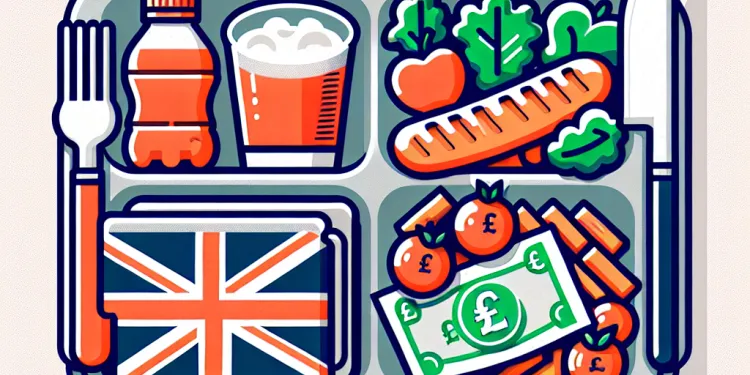
What is included in a typical school meal in the UK?
Relevance: 66%
-

What is the average cost of a school meal in the UK?
Relevance: 66%
-

What is the purpose of providing school meals in the UK?
Relevance: 65%
-

Are school meals free for all students in the UK?
Relevance: 64%
-
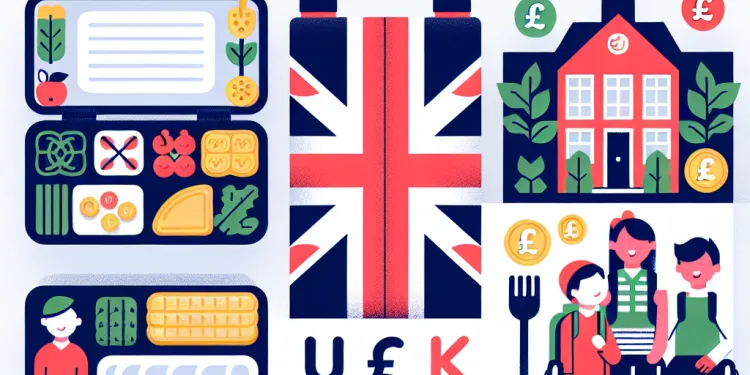
Can children with disabilities access school meals?
Relevance: 64%
-

Who is responsible for providing school meals in the UK?
Relevance: 64%
-

How are special dietary requirements catered for in school meals?
Relevance: 63%
-
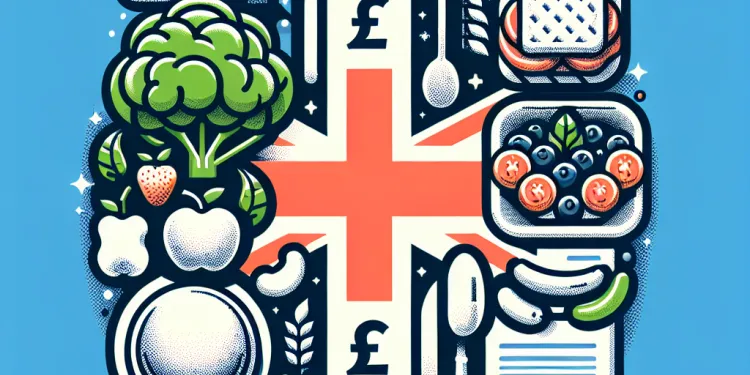
Are vegetarian or vegan options available in UK school meals?
Relevance: 63%
-

Can parents provide packed lunches instead of school meals?
Relevance: 61%
-
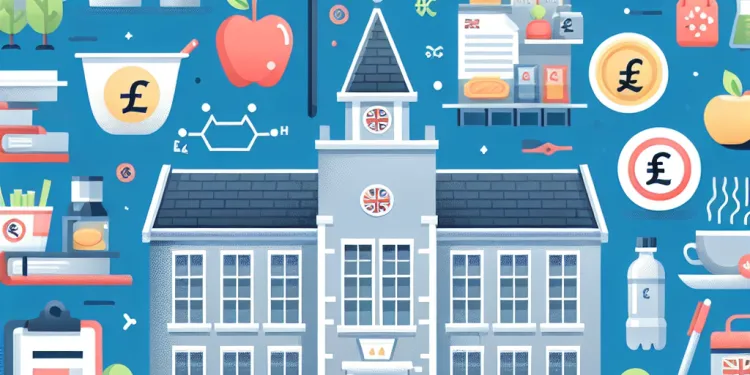
How are food allergies managed in UK schools?
Relevance: 60%
-

How can parents provide feedback on school meals?
Relevance: 59%
-

Who provides the funding for free school meals in the UK?
Relevance: 59%
-

Are there any initiatives to reduce food waste in schools?
Relevance: 58%
-

What criteria must be met for a child to be eligible for free school meals?
Relevance: 53%
-
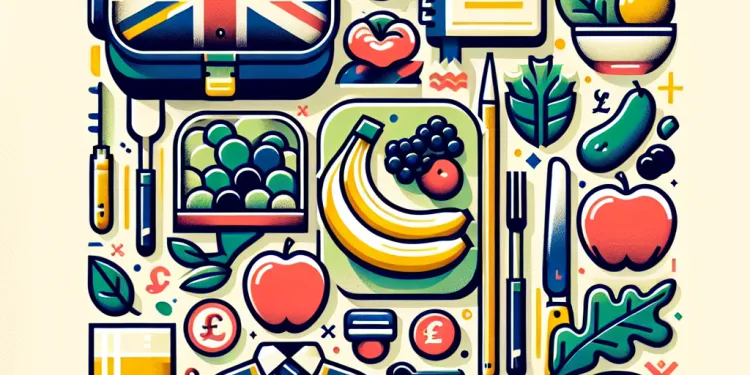
Is there a focus on healthy eating in UK school meals?
Relevance: 50%
-
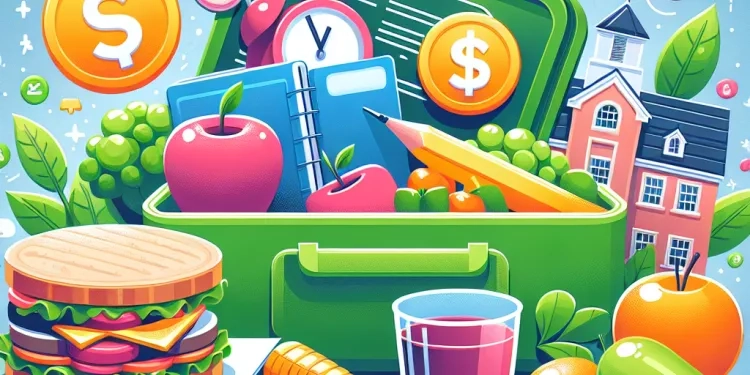
Calls for Better School Lunch Standards After Nationwide Survey
Relevance: 40%
-
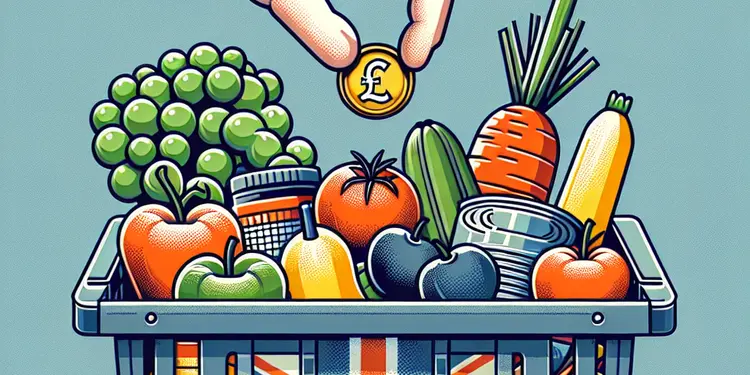
How do food banks get their food?
Relevance: 40%
-

What types of food are typically available at a food bank?
Relevance: 39%
-

Can Ozempic be taken with food?
Relevance: 39%
-

What is the difference between a food bank and a food pantry?
Relevance: 39%
-
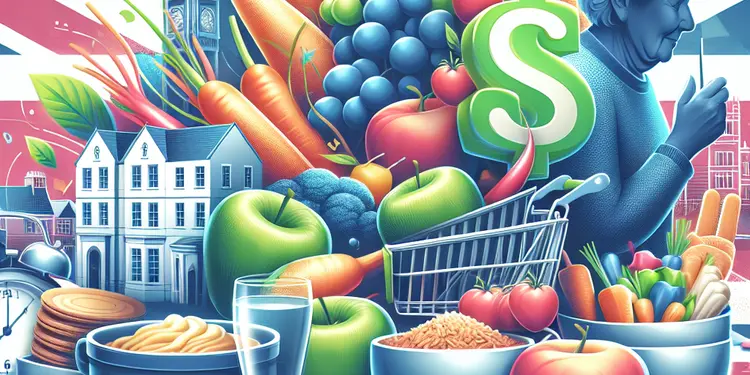
Are there any food assistance programs available for seniors?
Relevance: 38%
-

How can I support my local food bank?
Relevance: 37%
-

What if there is no food bank near me?
Relevance: 37%
-

What time are meals served?
Relevance: 36%
-

Can I go to work or school if I have norovirus?
Relevance: 34%
-
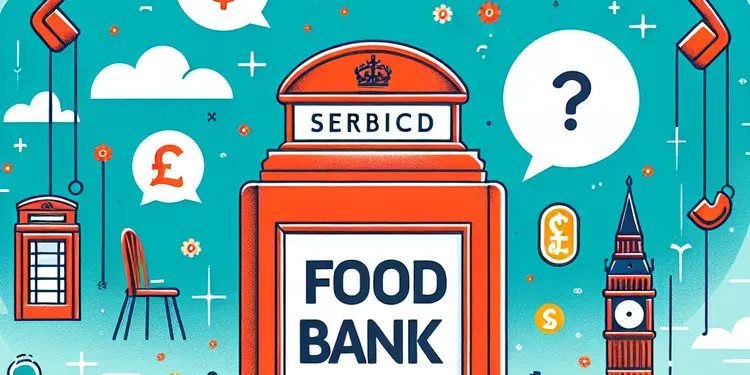
What is a food bank?
Relevance: 34%
-

Can certain foods help me stay cool?
Relevance: 34%
-

What foods are best to eat during a heatwave?
Relevance: 33%
-
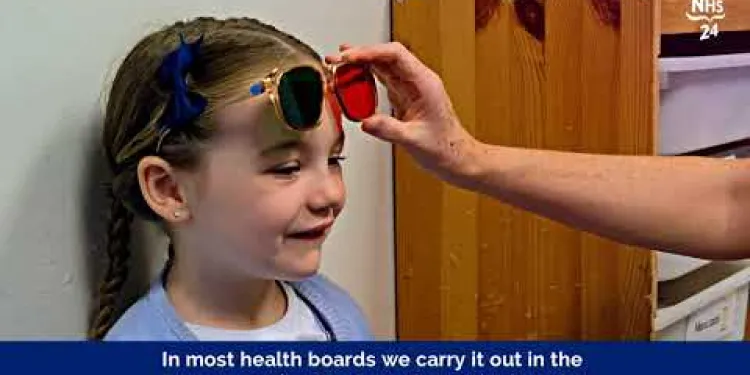
See4School
Relevance: 33%
-

How are school meal providers selected?
Relevance: 32%
-

What are some safety programs specifically for seniors?
Relevance: 31%
-

Is there a limit on how much food I can take from a food bank?
Relevance: 31%
-

What role do schools play in managing concussions?
Relevance: 31%
-

Health and safety responsibilities
Relevance: 31%
-

Is there a cost to receive food from a food bank?
Relevance: 31%
-
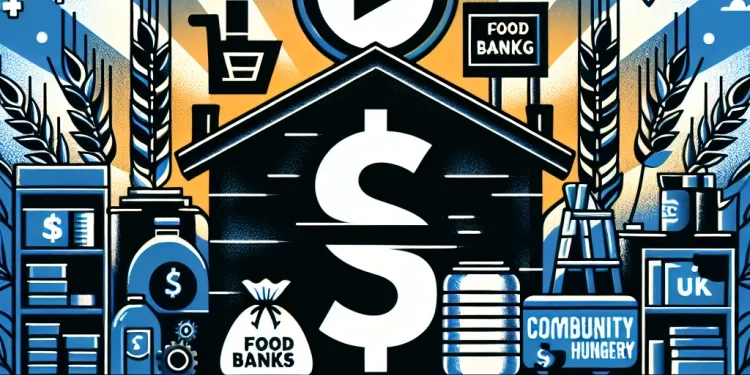
The Rise of Community Food Banks: Combating Hunger Locally
Relevance: 30%
Introduction to Food Safety in School Meals
Ensuring food safety in school meals is a critical public health objective in the UK. It involves a comprehensive set of measures designed to protect students from foodborne illnesses and ensure that meals are nutritious and safe for consumption. This requires cooperation from various stakeholders, including schools, catering companies, and health authorities.
Regulations and Standards
In the UK, food safety in schools is governed by a regulatory framework that includes the Food Safety Act 1990 and the Food Hygiene (England) Regulations 2013. These laws set out the hygiene standards that food businesses, including school caterers, must adhere to. Schools are required to register as food business operators with their local authority, ensuring compliance with legal standards.
Hygiene Practices
Proper hygiene practices are crucial to preventing contamination and ensuring food safety. School kitchens are required to maintain high standards of cleanliness and sanitation. This includes regular cleaning and disinfection of food preparation areas, equipment, and utensils. Staff must follow strict personal hygiene protocols, such as handwashing and using protective clothing.
Training and Education
Staff involved in food preparation and handling must undergo training to ensure they are knowledgeable about food safety practices. This includes training on cross-contamination prevention, cooking and storage temperatures, and allergen management. Continuous professional development helps keep the staff informed about the latest food safety guidelines and practices.
Monitoring and Inspection
Local authorities conduct regular inspections to ensure compliance with hygiene standards. These inspections assess kitchen facilities, food handling procedures, and staff training records. Any deficiencies are required to be addressed promptly to maintain safety standards. Schools must also conduct their internal audits and checks to monitor food safety consistently.
Allergen Management
Allergen management is a vital aspect of food safety. Schools must identify and clearly label food items that contain common allergens. Staff are trained to understand the needs of students with food allergies and ensure that cross-contact is minimized. Communication with parents and students about allergens in school meals is also an important safety measure.
Nutritious and Safe Menu Design
Designing menus that are both nutritious and safe is another critical aspect of food safety in schools. Meal plans are developed to meet dietary standards set out by the Department for Education, ensuring a balanced intake of nutrients. Using fresh, high-quality ingredients and minimizing the use of processed foods help enhance both the safety and nutritional value of school meals.
Conclusion
Ensuring food safety in school meals requires a multifaceted approach involving regulation, training, hygiene practices, and regular inspections. By adhering to these measures, schools in the UK aim to provide students with meals that are both nutritious and safe, thus supporting their health and well-being.
Introduction to Safe School Meals
Making sure school meals are safe to eat is very important in the UK. Meal safety helps keep students healthy by stopping illnesses from food. Schools, food workers, and health experts all need to work together to make meals safe and healthy.
Rules and Standards
In the UK, there are rules to keep food safe in schools. These include the Food Safety Act 1990 and the Food Hygiene (England) Regulations 2013. The rules say how clean and safe kitchens must be. Schools need to tell their local council they serve food to meet these rules.
Keeping Things Clean
Keeping the kitchen clean is important to stop food from getting dirty. School kitchens must be very clean and tidy. This means cleaning kitchens, tools, and dishes often. People who work with food must wash their hands and wear special clothes.
Learning About Food Safety
People who make and serve food need to learn how to keep it safe. They learn how to stop food from getting mixed up with bad things, how hot food should be, and how to manage allergies. Regular learning helps them know the newest ways to keep food safe.
Checks and Visits
Local councils check schools to make sure kitchens are clean and safe. They look at how food is made, how staff are trained, and what changes need to happen if something's not right. Schools also check their own kitchens to keep everything safe.
Handling Allergies
Keeping allergic students safe is a big part of food safety. Schools must label foods with common allergy ingredients. Staff learn to help students with allergies and make sure foods don't mix with allergens. Talking to parents and students about food allergies is also very important.
Healthy and Safe Meal Planning
Planning meals that are healthy and safe is key in schools. Menus follow rules set by the Department for Education to make sure kids eat healthy. Using fresh foods and less processed foods makes meals safer and better for students.
Conclusion
Keeping school meals safe needs a lot of work. This includes following rules, learning, cleaning, and regular checks. By doing all these things, UK schools aim to give students meals that are healthy and safe, helping them grow strong and well.
Frequently Asked Questions
What is the importance of food safety in school meals?
Food safety in school meals is crucial to protect students from foodborne illnesses and ensure they receive nutritious and safe meals for their growth and learning.
Who is responsible for ensuring food safety in school meals?
Responsibility for ensuring food safety in school meals typically involves school administration, food service staff, and health departments that provide guidelines and oversight.
What are some basic practices to ensure food safety in schools?
Basic food safety practices include proper hand washing, correct food storage, maintaining clean cooking areas, and ensuring food is cooked to the right temperatures.
How are food service employees trained for food safety?
Food service employees are trained through certified food safety courses that cover hygiene, cross-contamination, temperature control, and safe food handling procedures.
What role does temperature play in food safety for school meals?
Temperature control is critical to prevent the growth of harmful bacteria, with specific guidelines for cooking, storing, and serving foods safely.
How often are school kitchens inspected for safety compliance?
School kitchens are typically inspected semi-annually by health departments to ensure compliance with food safety regulations.
What measures are taken to prevent cross-contamination in school cafeterias?
Measures include using separate cutting boards for different types of food, cleaning surfaces regularly, and storing raw and cooked foods separately.
How is proper food storage ensured in schools?
Foods are stored at designated temperatures, labeled with expiration dates, and organized to ensure older products are used first (FIFO system).
What is HACCP and its role in school food safety?
HACCP (Hazard Analysis Critical Control Points) is a system used to identify, evaluate, and control food safety hazards in school meal programs.
How are allergens managed in school meals?
Schools manage allergens by clearly labeling foods, training staff to prevent cross-contact, and ensuring there are alternative options for students with allergies.
What should be done in case of a foodborne illness outbreak in a school?
Immediate steps include identifying and removing contaminated food, reporting to health authorities, and investigating the cause to prevent recurrence.
How does proper hand hygiene contribute to food safety in schools?
Proper hand hygiene helps prevent the spread of germs and bacteria that can cause foodborne illnesses, especially in food handling areas.
What type of equipment is used to maintain food safety in schools?
Equipment includes refrigerators, freezers, thermometers, food warmers, and cleaning supplies all designed to ensure foods are stored and prepared safely.
How do schools ensure safe water supply for meal preparation?
Schools work with local health departments to regularly test water quality and use filtration systems to ensure water safety in meal preparation.
Are there guidelines for reheating school meals safely?
Yes, schools follow guidelines that specify safe reheating temperatures to prevent bacterial growth in meals that have been previously prepared.
What cleaning and sanitation practices are followed in school cafeterias?
Regular cleaning schedules, use of approved sanitizers, and routine inspections ensure that equipment and food areas are clean and sanitary.
How can parents be assured of food safety in school meals?
Parents can be assured through transparency in food safety practices, regular communication from schools about standards, and by reviewing inspection reports.
What role do local health departments play in school meal safety?
Local health departments provide guidelines, conduct inspections, and offer training and resources to ensure school meal safety.
What is the importance of food labels in maintaining food safety?
Food labels provide essential information about ingredients, nutritional content, and allergens, which helps manage risks and inform decisions.
How do schools handle and report food recalls?
Schools promptly remove recalled items, notify relevant authorities, and communicate with staff and parents to ensure student safety.
Why is it important for school food to be safe?
Eating safe food at school is very important. It helps to keep kids healthy and strong. Safe food means it's clean and won’t make anyone sick.
Here are a few tips to help make sure food is safe:
- Wash hands before eating.
- Keep food at the right temperature.
- Look for clean places to eat.
Tools to help include:
- Colorful posters showing how to wash hands.
- Easy-to-read labels about food storage.
When food is safe, everyone can enjoy their meals without worry!
Making sure school food is safe is very important. It helps keep kids from getting sick from the food. Safe food also helps kids grow and learn better.
Who makes sure school meals are safe to eat?
It is important to keep food safe in school meals. This job usually belongs to the school bosses, lunch staff, and health departments. They make rules and check how things are going.
To help understand better, here are some tips and tools:
- Use pictures or icons to show food safety steps.
- Have simple lists for what to do to keep food safe.
- Practice with real-life examples in the school kitchen.
How can schools keep food safe?
To keep food safe, you can do some easy things:
- Wash your hands well before touching food.
- Put food in the right place, like the fridge, so it stays fresh.
- Keep the kitchen clean and tidy.
- Cook food until it is hot enough to eat safely.
You can use pictures or videos to help you learn these steps. It might be helpful to ask someone to show you how to do these things. You can also use a thermometer to check if the food is hot enough.
How do people who work with food learn to keep it safe?
People who work with food have to learn how to keep it safe. They take special classes to help them understand this.
Some things they learn include:
- Washing hands really well before touching food.
- Keeping food at the right temperature.
- Using clean tools and equipment.
- Learning what foods can be dangerous if not cooked properly.
To help remember these things, people can use:
- Pictures and signs that show what to do.
- Practice with a teacher or mentor.
- Watching videos that show how to be safe with food.
People who work with food learn how to keep it safe. They take special classes. These classes teach them about staying clean, keeping food at the right temperature, and how to handle food safely so no one gets sick.
How does temperature keep school meals safe?
Temperature is how hot or cold something is.
Keeping food at the right temperature helps it stay safe to eat.
If food gets too warm, germs can grow. Germs can make you sick.
If food is too cold, it can also be bad. It might not taste good or be safe.
Use a thermometer to check food temperature. A thermometer is a tool that tells you how hot or cold something is.
Make sure hot food stays hot and cold food stays cold.
Keeping the right temperature is very important. It stops bad germs from growing in food. Follow simple rules when cooking, storing, and serving food to keep it safe.
How many times do people check school kitchens to make sure they are safe?
Health workers check school kitchens twice a year. They make sure the food is safe to eat.
How do schools stop food germs from spreading in cafeterias?
Schools have rules to keep food safe. Here are some ways they do it:
- Wash hands: Workers wash their hands often.
- Separate foods: Keep raw and cooked foods apart.
- Clean surfaces: Clean tables and counters regularly.
- Use different tools: Use different knives and boards for different foods.
Tools that might help:
- Pictures: Look at pictures showing the right way.
- Charts: Use charts to remember steps.
- Videos: Watch videos that explain each step.
These help stop germs and keep food safe to eat.
Here are some ways to keep food safe:
- Use different cutting boards for each type of food. For example, one for vegetables and one for meat.
- Clean kitchen surfaces often to get rid of germs.
- Keep raw food (like uncooked meat) away from cooked food (like pasta or cooked chicken).
You can try using picture labels for your cutting boards and storage areas. This can help remember where things go.
How do schools keep food safe?
We keep food in the right places to make sure it stays fresh. We put labels on the food to show when it will go bad. We use the oldest food first before using the new food. This is called the FIFO system, which means "First In, First Out."
What is HACCP and how does it help keep school food safe?
HACCP is a plan to keep food safe. It finds things that could be risky and shows how to stop them. This helps keep the food in schools clean and safe to eat.
Tools to help you understand:
- Look at pictures that show how food stays safe.
- Ask someone to explain the hard words.
HACCP helps keep school meals safe. It finds problems, checks them, and fixes them before they happen. This way, the food stays safe for everyone to eat.
What are Schools Doing About Allergens in Lunches?
Schools have a plan to keep you safe from foods that might make you sick, like peanuts or milk. This is important if you have allergies. Here are some things they do:
- They ask parents to tell them about your food allergies.
- They make a list of foods you need to avoid.
- Cooks in the kitchen are careful not to mix your food with things you can't eat.
- Teachers and helpers know what to do if you have an allergic reaction.
If you have allergies, use these tips:
- Always tell an adult if you feel funny after eating.
- Wear a bracelet or necklace that says what you are allergic to.
Schools take care of allergies in a few ways:
- They put clear labels on foods to show what's in them.
- They teach staff how to stop mixing allergy foods with other foods.
- They have different food choices for kids with allergies.
What to Do if Kids Get Sick from Food at School?
If children get sick from food at school, here are some simple steps: 1. **Tell an Adult**: If you feel sick after eating, tell a teacher or school nurse right away. 2. **Wash Hands**: Wash your hands with soap and water to stop germs from spreading. 3. **Stay Safe**: If they tell you not to eat certain foods, don’t eat them. 4. **See a Doctor**: If you feel very sick, you might need to see a doctor. 5. **Rest Up**: Get plenty of rest and drink water to feel better. Tools that can help: - Use pictures or charts to understand what to do. - Ask for help if you don’t understand something. These steps can help everyone feel better faster.First, find out which food is bad and throw it away. Then, tell the health people about it. Next, find out what made the food bad so it doesn't happen again.
How does washing hands the right way help keep food safe in schools?
Washing your hands the right way helps stop the spread of germs and bacteria. Germs and bacteria can make us sick, especially when we are handling food.
What tools help keep food safe in schools?
Here is what schools use to keep food safe:
- Fridges and Freezers: They keep food cold so germs don't grow.
- Thermometers: These help check the food is the right temperature.
- Clean Surfaces: Tables and counters are cleaned to stop germs.
- Hand Wash Stations: People wash hands to keep food clean.
Support tools:
- Use pictures to show what each tool looks like.
- Listen to someone explain how the tools work.
Here is a list of tools you need to keep food safe:
- Refrigerators: Keep food cold.
- Freezers: Keep food very cold.
- Thermometers: Check food temperature.
- Food warmers: Keep food hot.
- Cleaning supplies: Keep everything clean.
These tools help make sure food is safe to eat.
Tip: Ask an adult to show you how to use these tools.
How do schools make sure the water is safe for cooking meals?
Schools need clean water to make food for students. Here's how they do it:
- Check Water: Schools test water to make sure it's clean.
- Clean Pipes: They take care of pipes to stop dirt from getting in water.
- Use Filters: Schools use filters to make water even cleaner.
- Work with Experts: They ask experts to help keep water safe.
To learn more, you can:
- Ask questions if you don't understand something.
- Use pictures or videos to see how things work.
Schools check the water to make sure it is clean and safe. They do this with local health helpers. Schools use special filters so the water is safe for cooking food.
How can we safely warm up school meals?
Here are some tips to help you:
- Ask an adult for help.
- Use a microwave if you have one.
- Make sure the food is hot all the way through.
- Let the food cool a little before eating so you don’t burn yourself.
You can also use a timer to keep track of heating times.
Yes, schools have rules to keep food safe. They heat food to make sure there are no germs. This keeps the food healthy to eat.
How do schools keep cafeterias clean?
Schools have rules to keep cafeterias tidy and safe. Here are some things they do:
- Wash tables and chairs often.
- Clean floors every day.
- Use soap and water to clean dishes.
Using pictures can help understand these steps better. Schools might also use videos to show how they clean.
It is important to keep things clean. We should clean often, use safe cleaning sprays, and check everything regularly. This keeps our tools and food spaces safe and clean.
How can parents know school meals are safe?
Parents want to make sure the food their kids eat at school is safe. Here are some ways to help with this:
- Ask the school about their food safety rules.
- Talk to school staff about how food is cooked and stored.
- Visit the school kitchen if you can.
- Join meetings about school meals.
- Read any notes or letters from the school about food.
If you have questions, don’t be afraid to ask for help or more info.
Parents can feel safe about food in schools. Schools should tell parents how they keep food safe. They should also send updates often. Parents can also look at the check-up reports about food safety.
What do local health departments do to keep school meals safe?
Local health departments help keep school meals safe. They give rules to follow, check if things are okay, and teach about safety. They also give tools to help.
Why are food labels important for keeping food safe?
Food labels help us know what is in our food.
This keeps our food safe.
We can see if the food has nuts or milk. Some people cannot eat these.
We can check the date to know if the food is still good to eat.
Use a magnifying glass if the words are too small.
Ask someone you trust to help you read the labels.
Food labels tell us important things about the food we eat. They show what is inside, how healthy it is, and if it has anything some people might be allergic to. This helps us make smart choices about what to eat and stay safe.
How do schools manage and tell people about food recalls?
When food is not safe to eat, it is called a food recall.
Here is how schools manage food recalls:
- Schools stop using the food right away.
- They tell all the teachers and students about it.
- Schools tell the parents too.
Schools also share this news with special food safety places.
If you want help to read better, you can:
- Listen to someone read the words.
- Look at pictures that help explain the words.
Schools quickly take away things that are not safe. They tell the right people about it and make sure to let the teachers and parents know, so all the kids are safe.
Useful Links
- Ergsy carfully checks the information in the videos we provide here.
- Videos shown by Youtube after a video has completed, have NOT been reviewed by ERGSY.
- To view, click the arrow in centre of video.
- Most of the videos you find here will have subtitles and/or closed captions available.
- You may need to turn these on, and choose your preferred language.
- Go to the video you'd like to watch.
- If closed captions (CC) are available, settings will be visible on the bottom right of the video player.
- To turn on Captions, click settings .
- To turn off Captions, click settings again.
More Items From Ergsy search
-

What measures are taken to ensure food safety in school meals?
Relevance: 100%
-

How are school meals provided in the UK?
Relevance: 75%
-

Are school meals inspected for quality and standards?
Relevance: 75%
-

Are there educational components to the school meal program?
Relevance: 68%
-

What is included in a typical school meal in the UK?
Relevance: 66%
-

What is the average cost of a school meal in the UK?
Relevance: 66%
-

What is the purpose of providing school meals in the UK?
Relevance: 65%
-

Are school meals free for all students in the UK?
Relevance: 64%
-

Can children with disabilities access school meals?
Relevance: 64%
-

Who is responsible for providing school meals in the UK?
Relevance: 64%
-

How are special dietary requirements catered for in school meals?
Relevance: 63%
-

Are vegetarian or vegan options available in UK school meals?
Relevance: 63%
-

Can parents provide packed lunches instead of school meals?
Relevance: 61%
-

How are food allergies managed in UK schools?
Relevance: 60%
-

How can parents provide feedback on school meals?
Relevance: 59%
-

Who provides the funding for free school meals in the UK?
Relevance: 59%
-

Are there any initiatives to reduce food waste in schools?
Relevance: 58%
-

What criteria must be met for a child to be eligible for free school meals?
Relevance: 53%
-

Is there a focus on healthy eating in UK school meals?
Relevance: 50%
-

Calls for Better School Lunch Standards After Nationwide Survey
Relevance: 40%
-

How do food banks get their food?
Relevance: 40%
-

What types of food are typically available at a food bank?
Relevance: 39%
-

Can Ozempic be taken with food?
Relevance: 39%
-

What is the difference between a food bank and a food pantry?
Relevance: 39%
-

Are there any food assistance programs available for seniors?
Relevance: 38%
-

How can I support my local food bank?
Relevance: 37%
-

What if there is no food bank near me?
Relevance: 37%
-

What time are meals served?
Relevance: 36%
-

Can I go to work or school if I have norovirus?
Relevance: 34%
-

What is a food bank?
Relevance: 34%
-

Can certain foods help me stay cool?
Relevance: 34%
-

What foods are best to eat during a heatwave?
Relevance: 33%
-

See4School
Relevance: 33%
-

How are school meal providers selected?
Relevance: 32%
-

What are some safety programs specifically for seniors?
Relevance: 31%
-

Is there a limit on how much food I can take from a food bank?
Relevance: 31%
-

What role do schools play in managing concussions?
Relevance: 31%
-

Health and safety responsibilities
Relevance: 31%
-

Is there a cost to receive food from a food bank?
Relevance: 31%
-

The Rise of Community Food Banks: Combating Hunger Locally
Relevance: 30%